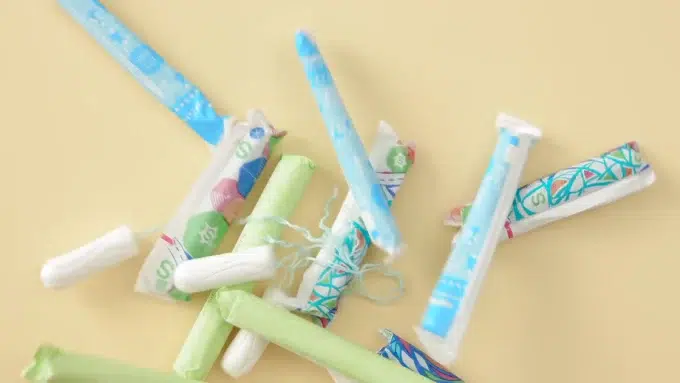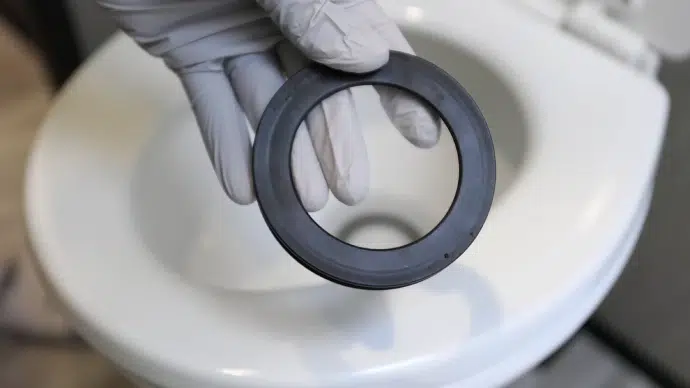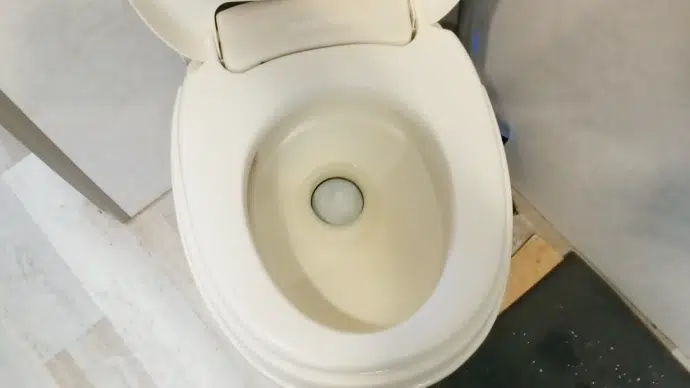Last Updated on April 5, 2023
Despite what you may think, flushing tampons down an RV toilet isn’t recommended. This can cause blockages in the plumbing system and lead to backups or overflows, making for an inconvenient journey.
Tampon disposal is essential when camping so that you can avoid these issues. Discover why flushing tampons in an RV toilet is a bad idea and what alternatives exist for proper disposal. And, if you want to learn more about proper tampon disposal when camping, don’t miss this blog post.
Can You Put Tampons in RV Toilet: 3 Explanations
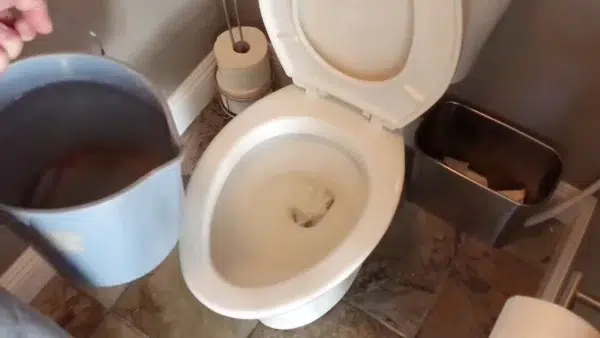
It’s important to remember certain things when you’re using an RV toilet. One of the most common questions people have is whether or not they can flush tampons down an RV toilet. The answer is complicated, so let’s look at the issue closely.
What Happens When Tampons Are Flushed in an RV Toilet?
Flushing tampons down an RV toilet may seem quick and easy but it can lead to serious issues. Tampons are not designed to dissolve quickly, which means they can clog the RV’s plumbing system or even cause damage to the sewage system.
It’s important to note that RV toilets work differently than traditional toilets. Most RVs use a gravity-fed sewer system that relies on gravity to move the waste from the toilet to the holding tank. This means that anything you flush down the toilet needs to move through the pipes easily.
Risks Involved in Flushing Tampons in an RV Toilet
The act of flushing tampons in an RV toilet may seem convenient, but it can lead to several risks and problems. The main issue is that tampons do not dissolve easily in water, especially in the small tanks of RV toilets. Blockages can occur in the plumbing system, leading to backups and overflows.
When flushed in an RV toilet, tampons can get caught on various plumbing system parts, such as valves and sensors. This can cause damage to the toilet and other components, leading to costly repairs. Additionally, flushing tampons can contribute to unpleasant odors inside the RV due to waste buildup.
Another risk associated with flushing tampons is environmental damage. Tampons contain synthetic materials that take a long time to decompose and can harm marine life if they end up in bodies of water.
Moreover, some campgrounds have regulations against flushing anything besides human waste and toilet paper in their systems.
Alternatives to Flushing Tampons in an RV Toilet
Several options exist for flushing tampons in an RV toilet that is both safe and convenient. One option is to use biodegradable tampons designed to break down quickly in water. These tampons are made from natural materials and do not contain any harmful chemicals.
Another alternative is to use menstrual cups or period panties instead of tampons. Menstrual cups are reusable and easy to clean, while period panties can be washed and reused multiple times. Both options are environmentally friendly and do not require any unique disposal methods.
If you prefer traditional tampons, you can dispose of them properly by wrapping them in toilet paper or a small plastic bag before throwing them away in the trash. This will help prevent them from ending up in landfills where they can decompose for years.
It’s important to remember that even if you use biodegradable tampons or other alternatives, you should never flush them down an RV toilet. Flushing anything other than human waste and toilet paper can cause serious damage to your plumbing system.
How to Dispose of Tampons Properly While RV Camping
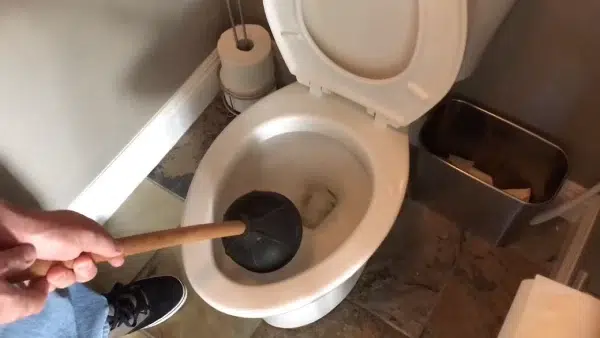
When RV camping, it’s essential to dispose of tampons properly to avoid any negative impacts on the environment and your RV’s plumbing system. Improper disposal of tampons can lead to pollution and damage to your RV’s pipes, causing clogs and other issues.
Using a Specialized Sanitary Disposal System
One way to dispose of tampons is by using a specialized sanitary disposal system. These systems are designed explicitly for disposing of feminine hygiene products and are available at most camping supply stores.
To use the system, you’ll need to follow the manufacturer’s instructions carefully. Usually, you’ll need to insert the used tampon into a plastic bag provided by the system and then place it in a designated compartment. This method ensures that the tampon is disposed of hygienically and doesn’t create any mess or odor.
Using a specialized sanitary disposal system is an excellent option for those who want a hassle-free and environmentally-friendly way of disposing of their tampons while RV camping. It’s also an excellent alternative if you’re not comfortable with burying your tampons or throwing them in the trash bin.
However, remember always to carry extra supplies such as plastic bags or liners when using this method. This will ensure that you have enough supplies to last throughout your trip.
Wrapping and Throwing in the Trash Bin
Tampons can be disposed of by wrapping them up and throwing them in the trash bin while RV camping. However, it is important to note that not all trash bins are created equal. It’s best to use a bin with a tight-fitting lid to prevent animals from getting into it and spreading the waste around.
When wrapping up the tampon, be sure to use biodegradable or compostable bags if possible. This will help reduce the environmental impact of your waste. If you don’t have access to these types of bags, wrapping the tampon in toilet paper or tissue will suffice.
It’s important to remember that even when throwing tampons in the trash bin, they should never be flushed down the toilet. Tampons can cause serious clogs and damage to your RV’s plumbing system if not disposed of properly.
Burying in a Hole Away From Your Campsite
To bury tampons, dig a small hole at least six inches deep and 200 feet away from any water source or trail. Place the used tampon in the hole and cover it with dirt. This method not only disposes of the tampon properly but also prevents animals from digging it up.
However, it is important to note that burying tampons may not be allowed in some campsites or national parks. In these cases, using a specialized sanitary disposal system or wrapping and throwing them in the trash bin would be a better option.
It is crucial to maintain good sanitation practices while RV camping by carrying extra supplies, cleaning and disinfecting frequently, and educating fellow travelers on proper disposal methods. By following these tips, you can ensure a safe and enjoyable camping experience for yourself and others.
Are there any specific tampons designed for RV toilets?
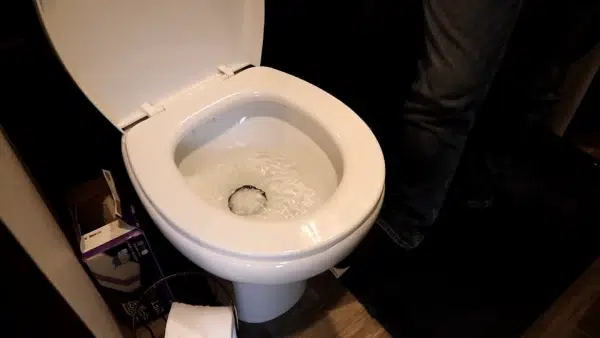
There are no specific tampons designed for RV toilets. It is important to note that tampons and wipes can cause blockages in the holding tank of an RV. Therefore, it is recommended to use septic-safe toilet paper for RVs.
Thinner and non-clogging materials are also recommended for this purpose. Several septic-safe toilet papers available in the market are suitable for use in RVs. Choosing toilet paper that is specifically labeled as septic-safe is advisable to avoid any issues while on the road.
How long does it take a tampon to decompose?
The decomposition time of a tampon can vary depending on the materials used and the disposal method. Traditional tampons made with non-compostable materials may take several years to decompose.
However, tampons made with 100% cotton can decompose in a compost pile within 5-6 months, depending on the compost bin’s moisture levels, material, and temperature.
It is important to note that flushing tampons down the toilet can cause environmental harm and blockages in pipes. Therefore, used tampons should be wrapped and disposed of in the garbage. Alternatively, compostable tampons are available, which can be disposed of in a compost bin.
Protect Your RV Toilet from Blockages and Backups
Flushing tampons down an RV toilet should be avoided due to the potential for blockages and backups leading to costly repairs or contamination from leaking sewage into nearby bodies of water.
There are also alternative methods for safely disposing of used products, such as using plastic bags for storage until back home or securely wrapping products before throwing them away with solid waste items like paper towels and food scraps when camping in natural beauty.
By following these guidelines, campers can ensure that their RV toilets remain functioning properly while minimizing their environmental impact.

